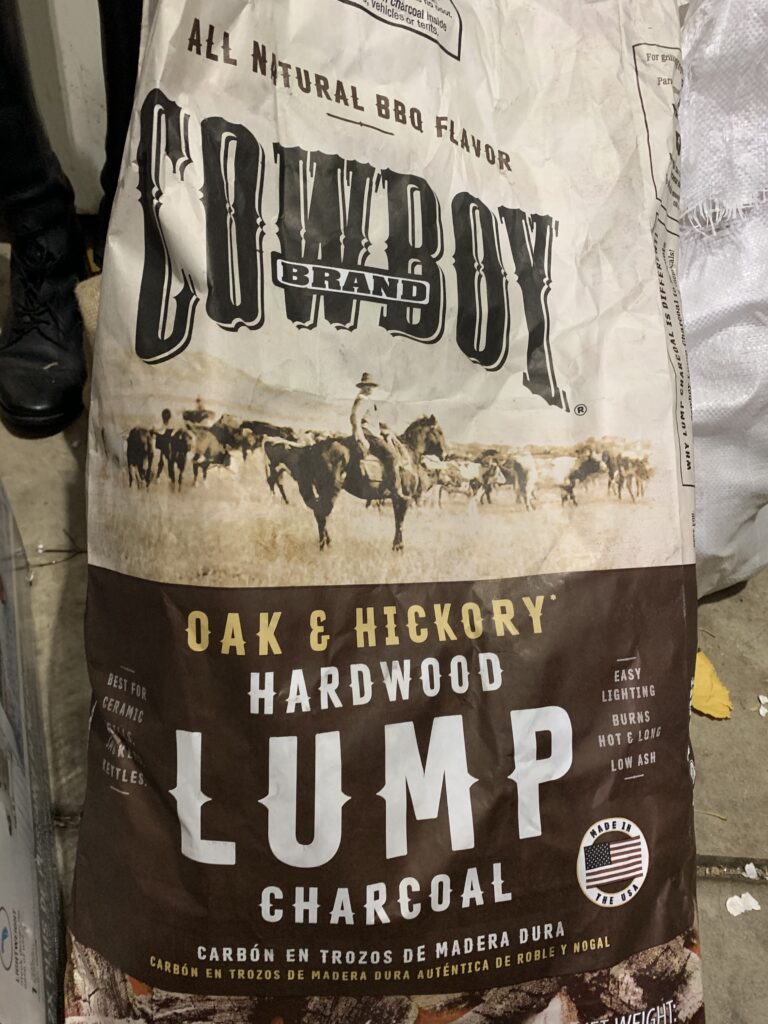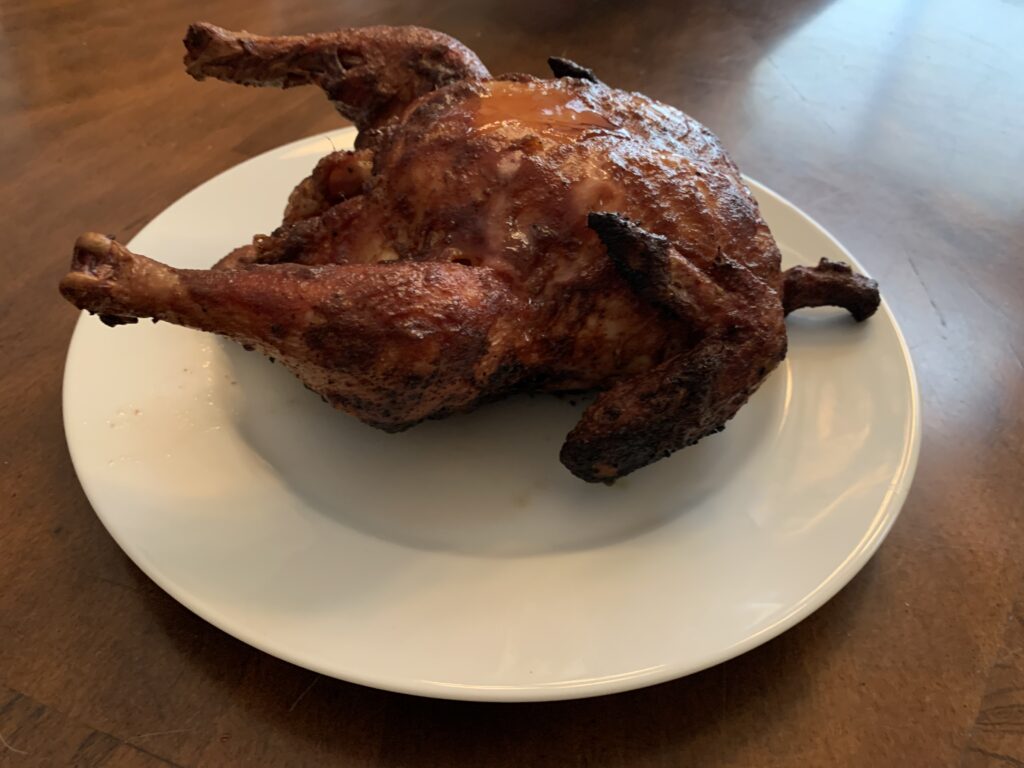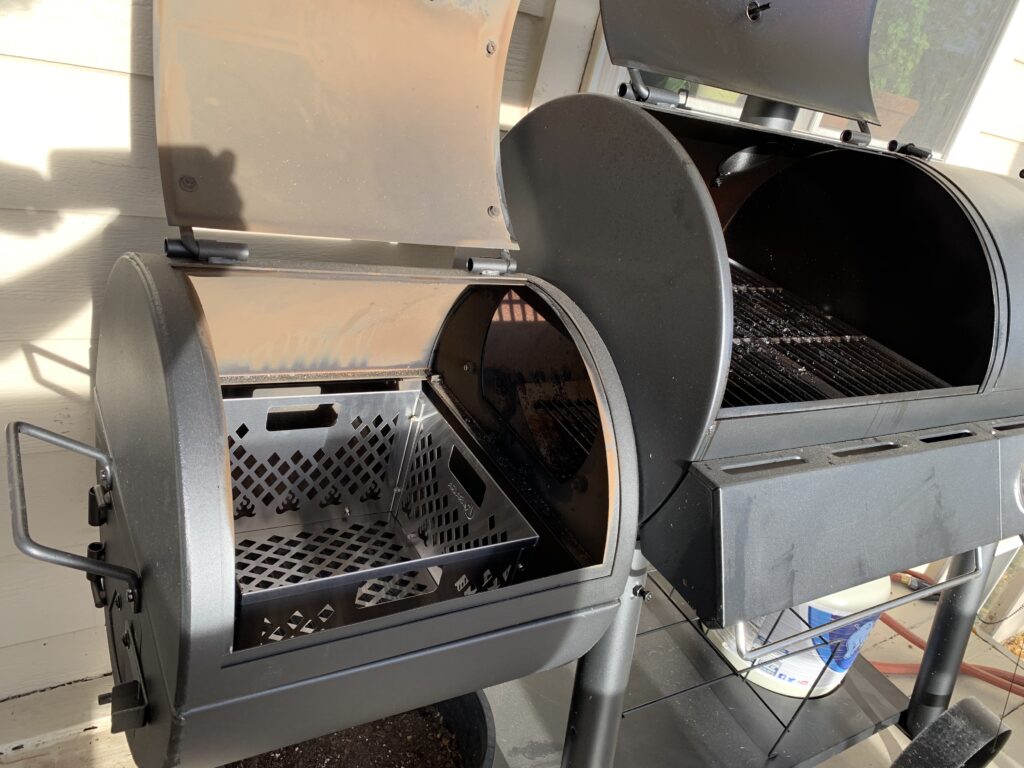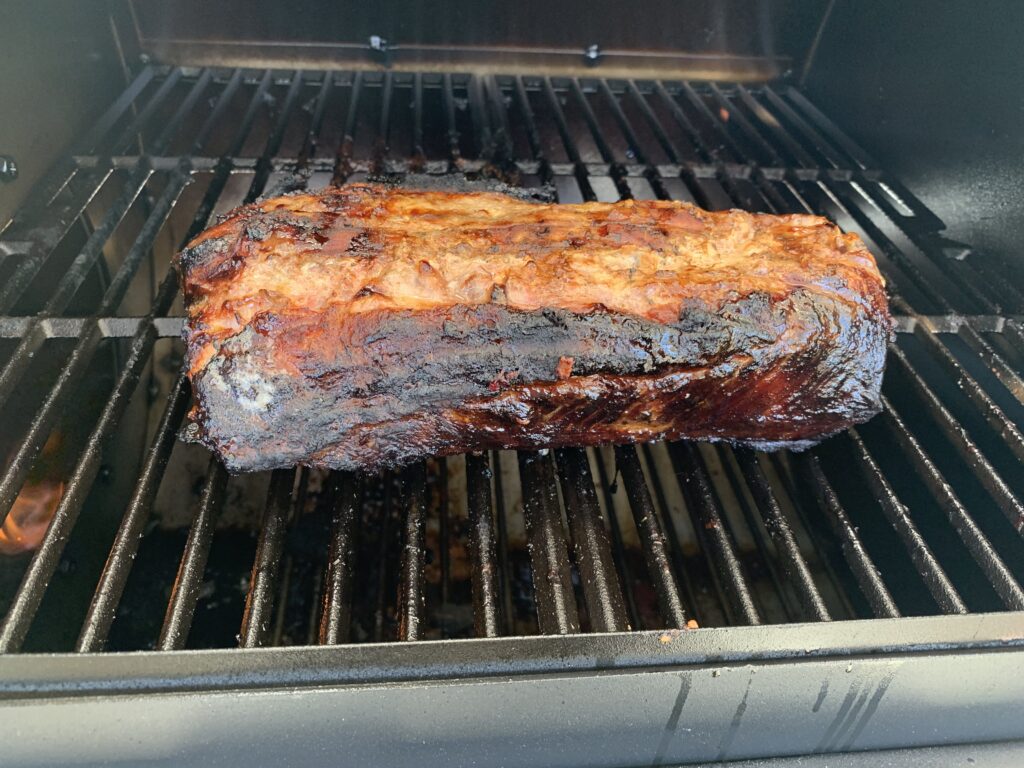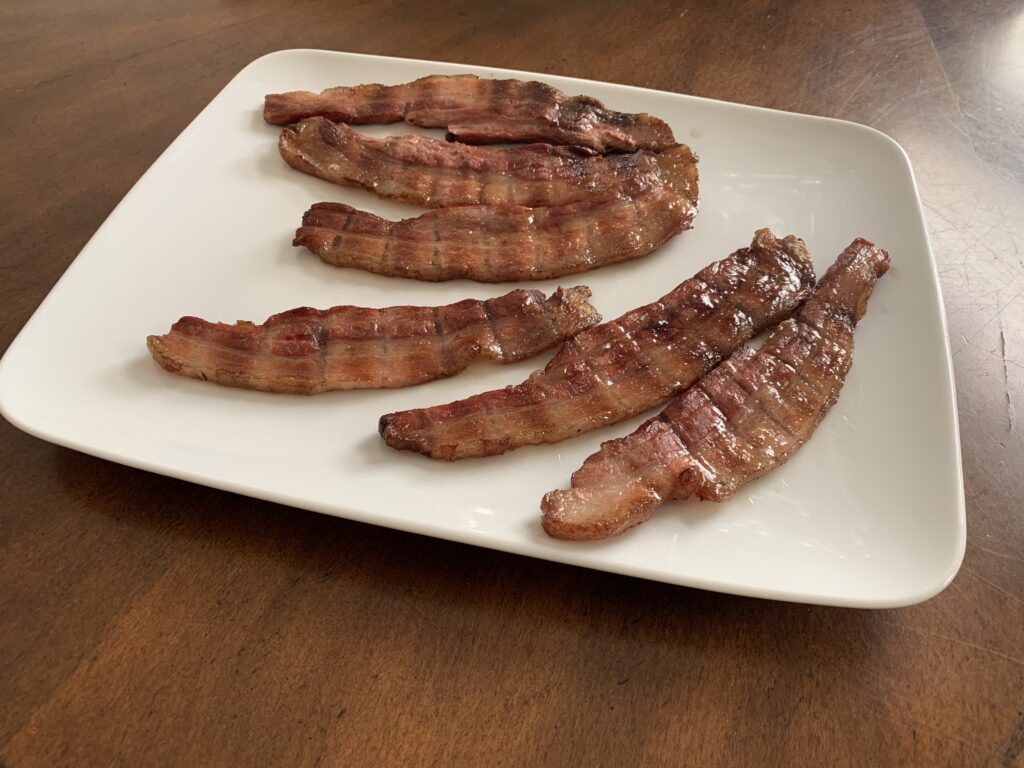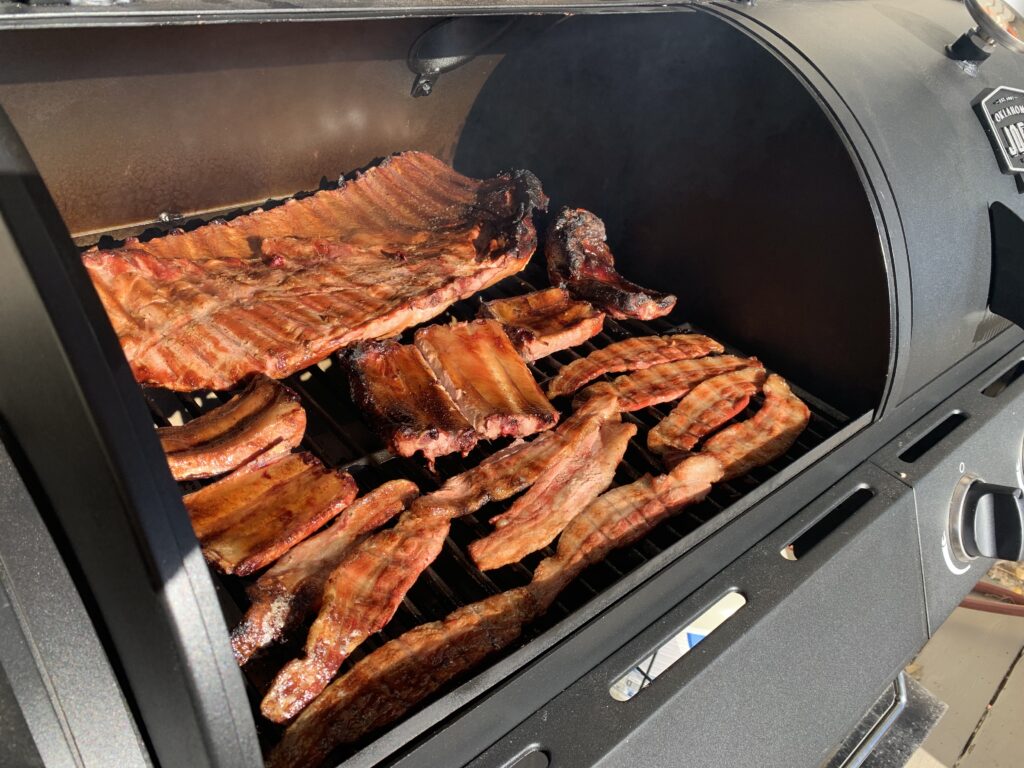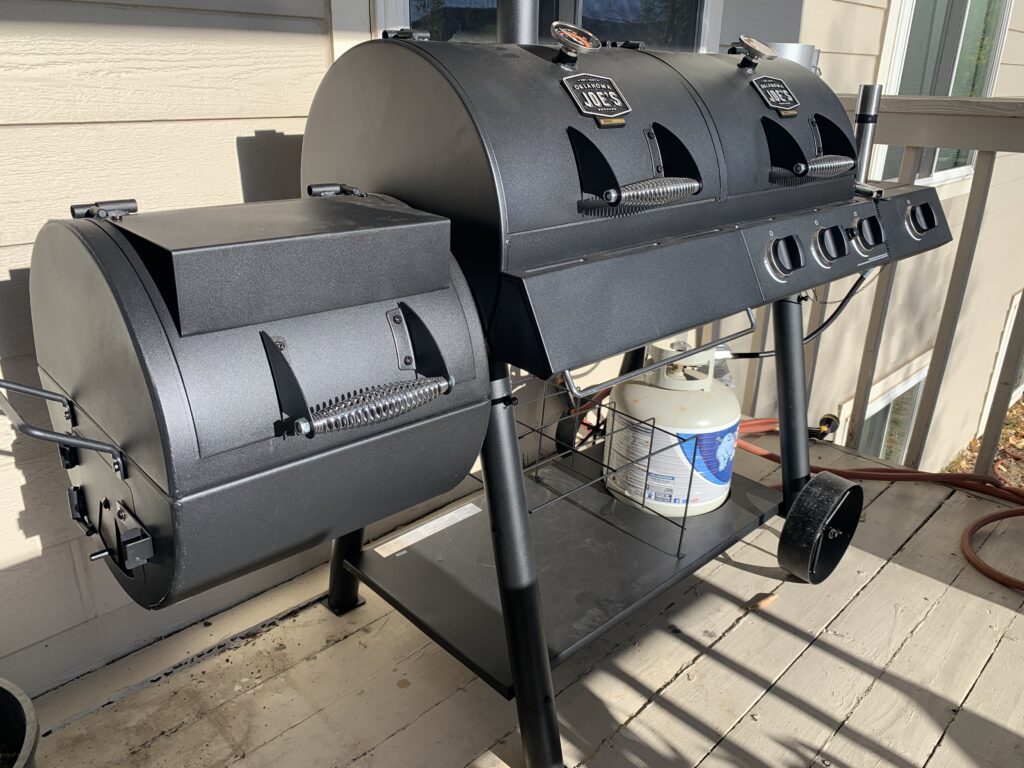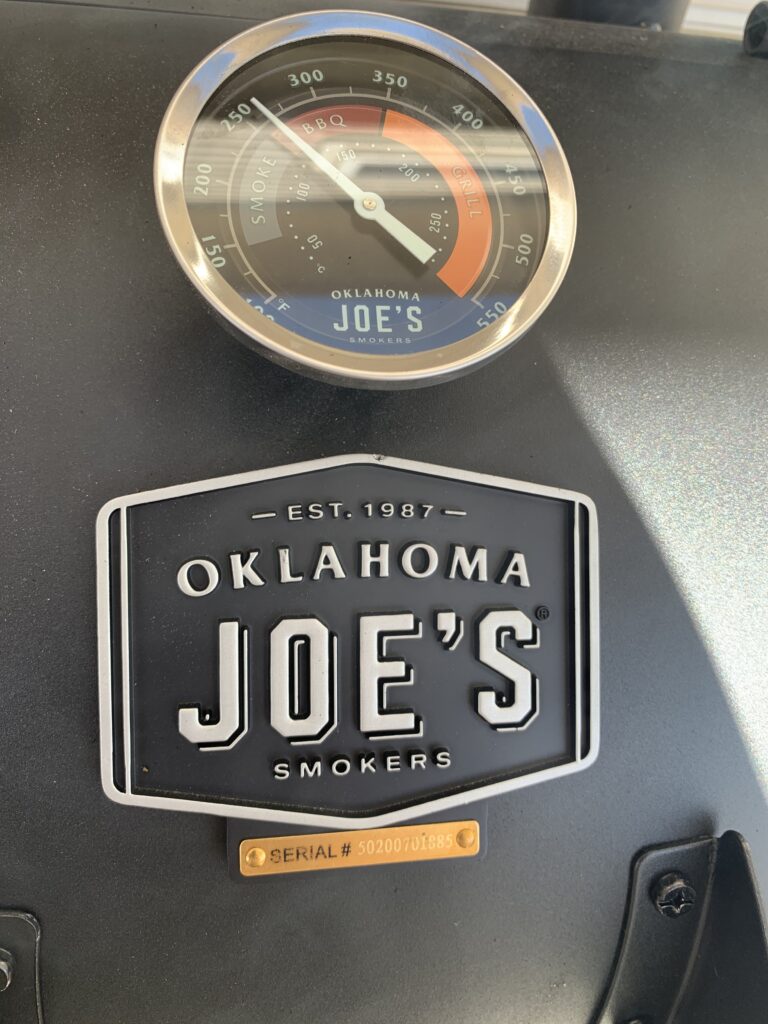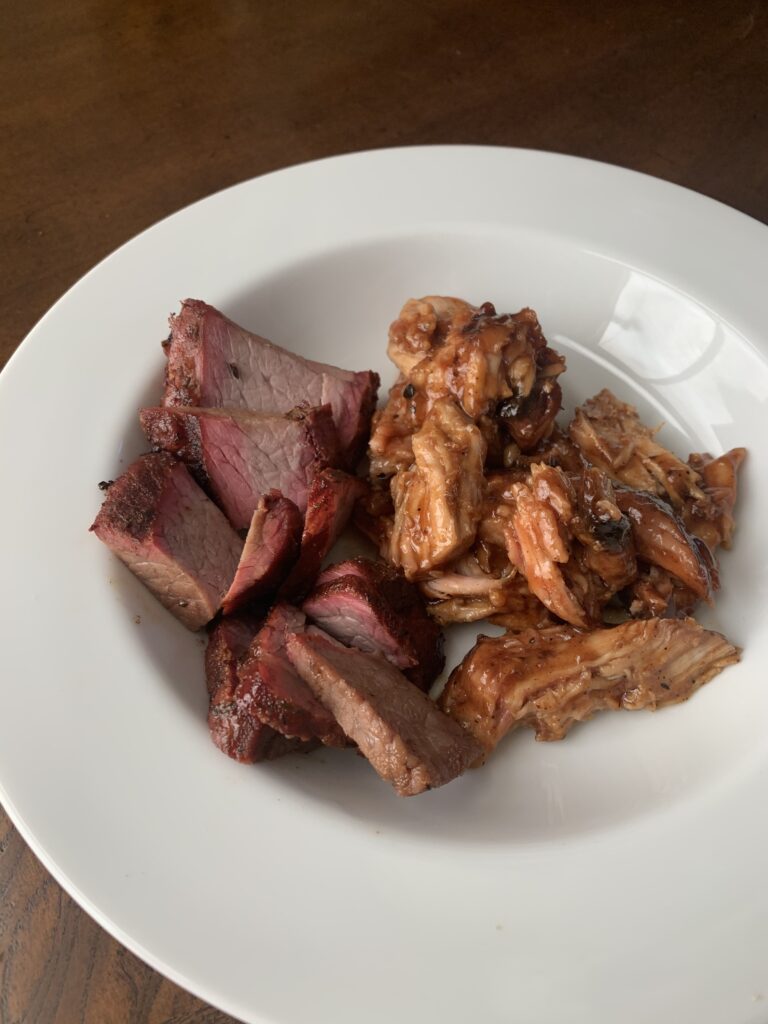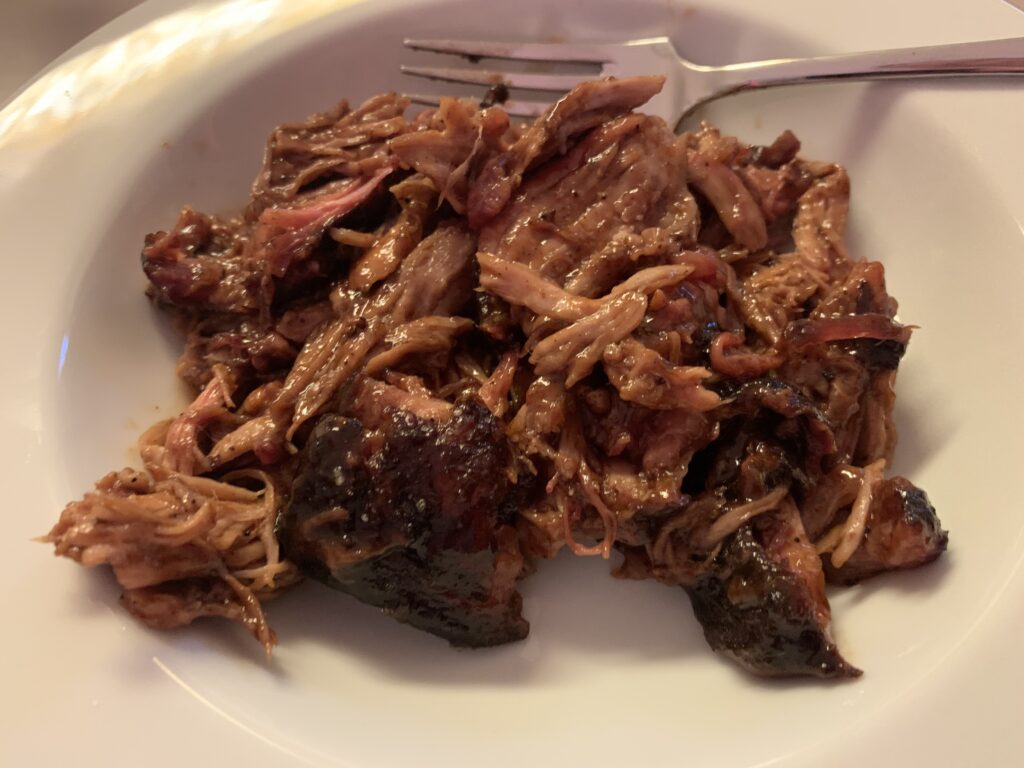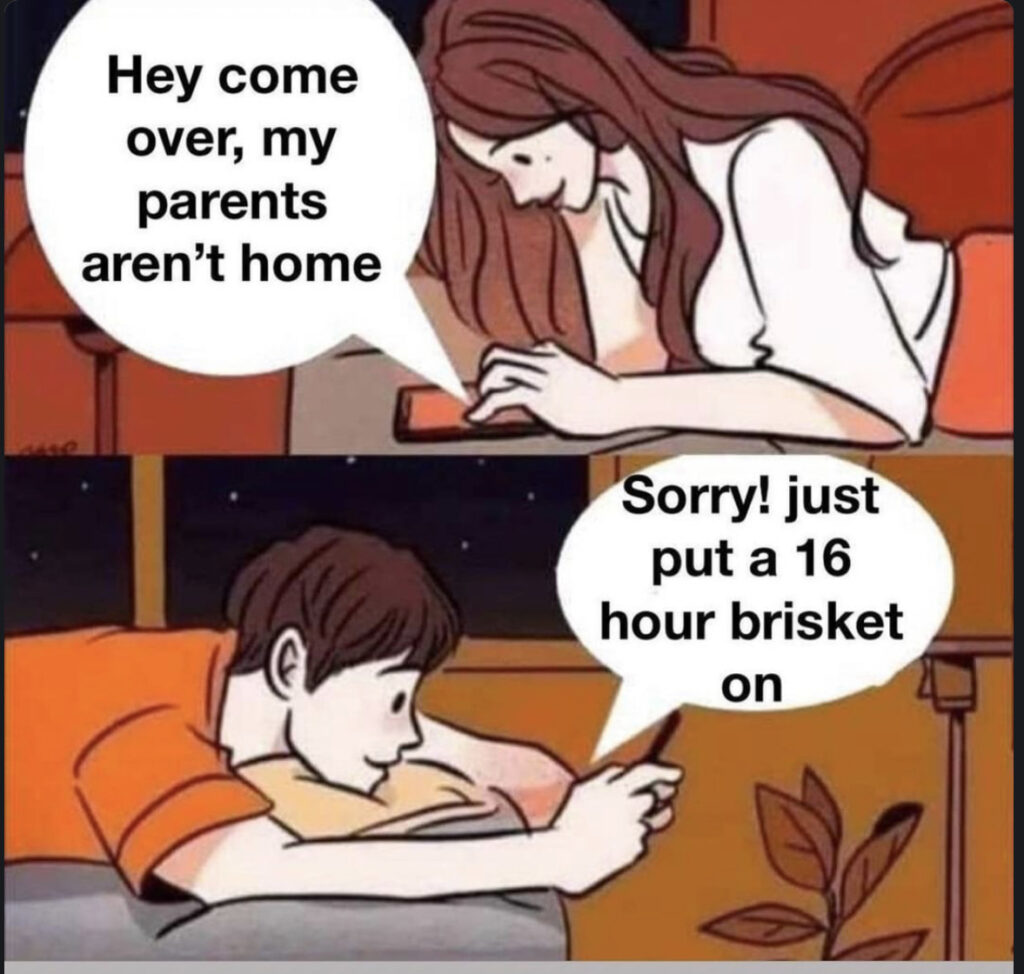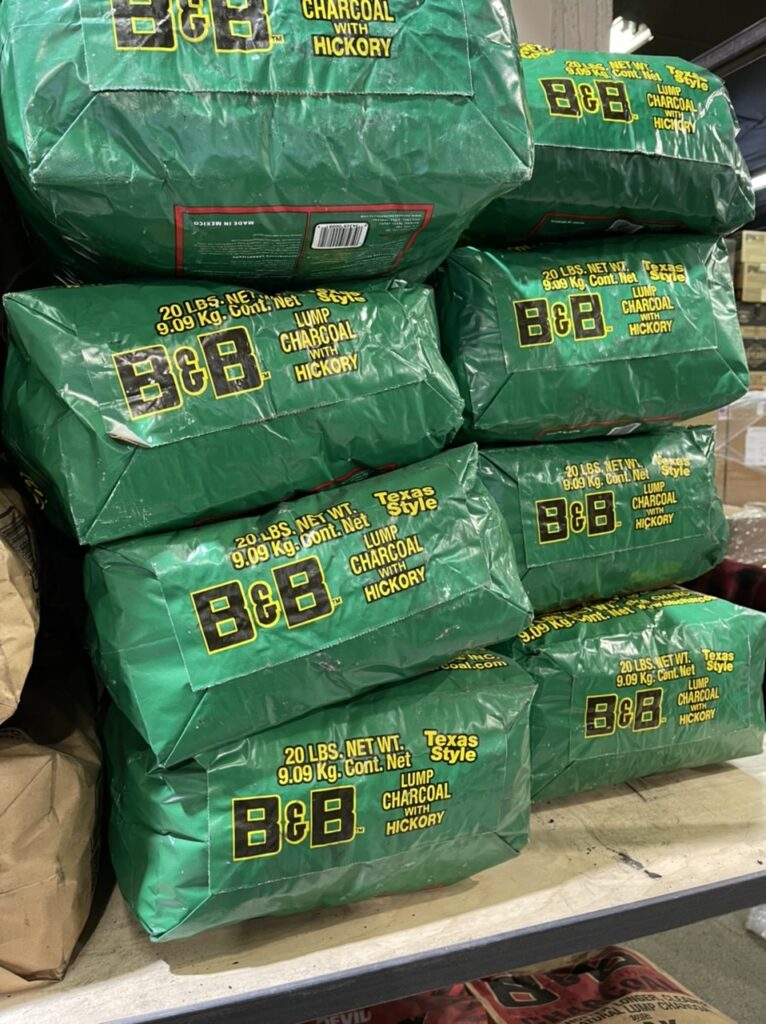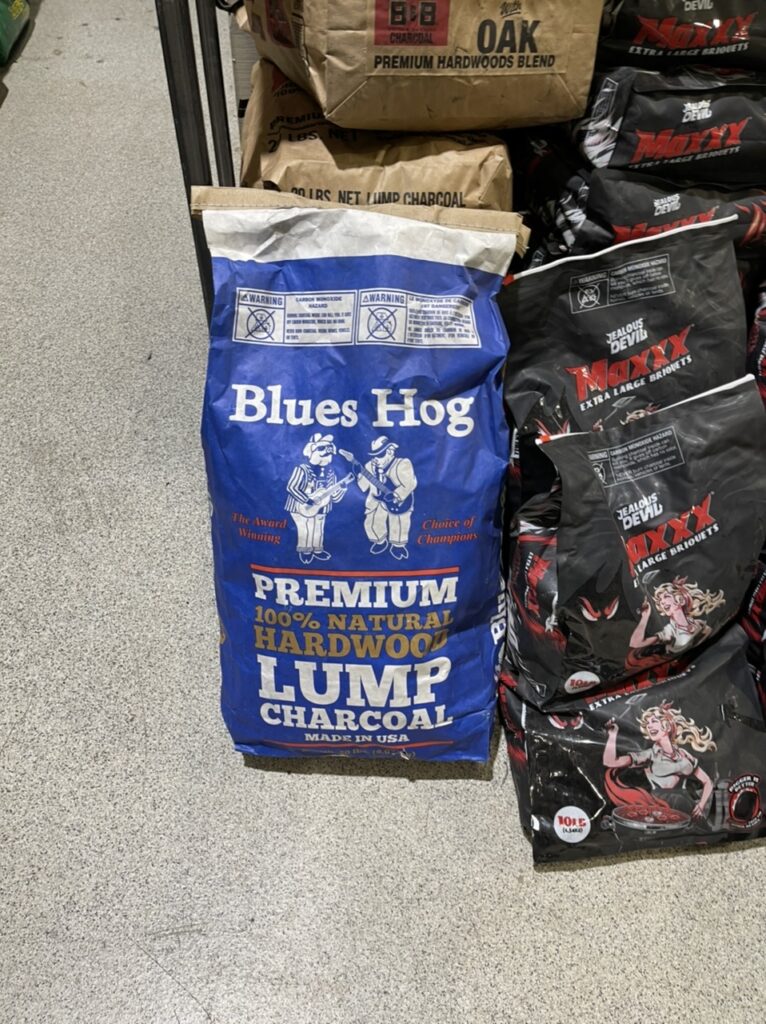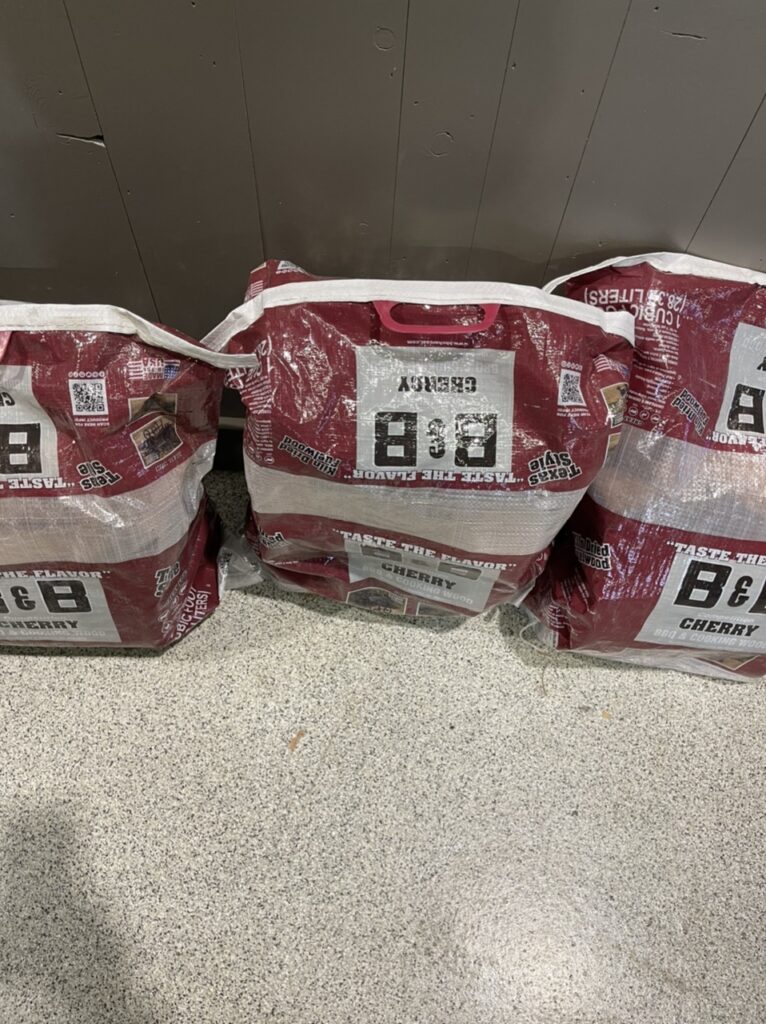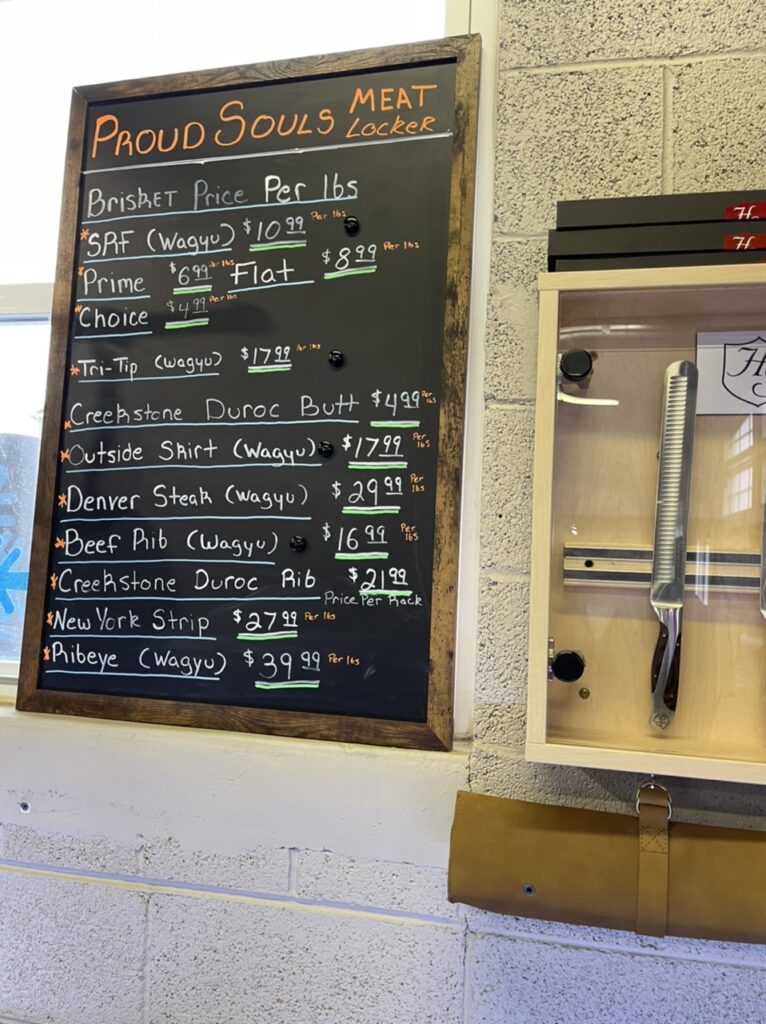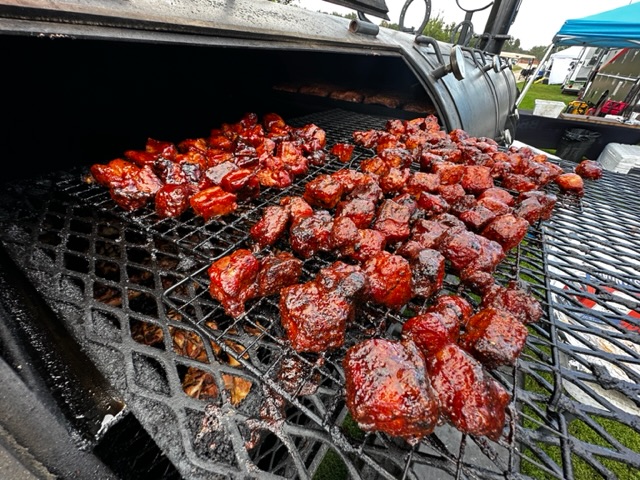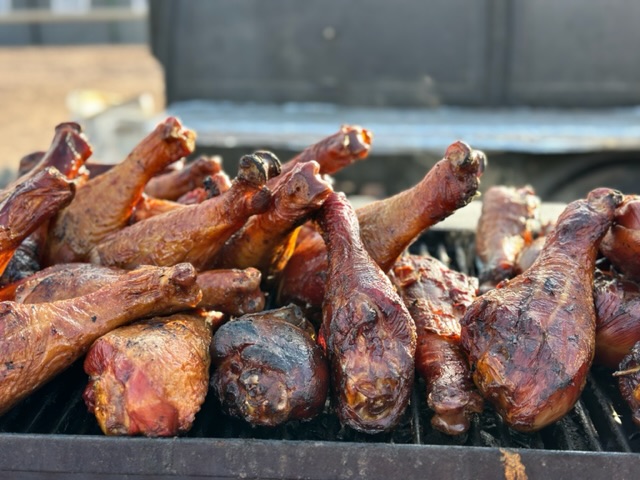“Welcome to the fastest way to slow down”—smoking barbecue with an Oklahoma Joe’s Stick Burner Offset Smoker
There is a lot of hype on the Internet about backyard barbecue smokers, most of it exaggerated in complexity or simply lacking an understanding of basic fire principles. Myron Mixon, the Winningest Man in Barbecue, said, “Hell, I could beat you cooking on a trash can.” And then he did just that on a cooking show cooking a chicken. This isn’t rocket science, it’s fire and smoke and love. But the love part is the secret, as Myron said to competitors looking to rip off his secrets, “You can watch what I do, but you still can’t do what I do.” He wasn’t just being cocky, he was saying he has been managing fires everyday since he was a boy while his father ran the pits, which is the real secret to getting barbecue right. So I find all of the latest and greatest grills, thermometers, etc., pretty humorous, as it isn’t about all of that. If you want that get a pellet grill or something more scientific than an offset firebox.
Grilling at high heat is great for searing steaks because it’s meant for cuts that are already tender, but barbecue is about low and slow, over an indirect fire, where you want to not only cook the meat but infuse flavor coming from the wood. You can barbecue anything you can grill but you can’t grill everything you can barbecue, if so says Myron Mixon. What you need is an offset smoker, some oak lump charcoal, a stack for lighting charcoal with some natural fire starters, some pecan for meats and some cherry/apple mix lumps for smoking—-together with some good fire starting skills, and a torch doesn’t hurt either. I’m not into fancy ingredients for barbecue. It’s really not that complicated, just add a couple more chunks for every hour of smoking and keep an eye on your intake opening and close that down if temperatures start to drop. I leave the flute fully open on our Oklahoma Joe’s Longhorn, but of course, that may vary depending on your ambient temperature and wind. Find what works for you. Throw a chimney full of lump charcoal (Cowboy brand hickory and oak from Lowe’s for $13 for 15 pounds is a good deal but Mixon uses charcoal briquettes and lighter fluid and he’s the winningest man in barbecue ) in the fire pit. Fill up another chimney and light it, with a couple of natural fire starters put in at the bottom before filling. Wait 10-15 minutes until all lumps are started, then dump in the firebox in the center and arrange 3-4 chunks of wood around it. Keep the door open for the side and the top of the firebox for about 20 minutes, then close up, check your temp, and you are good to go for a couple of hours of bbq smoking, adding a chunk or two every hour thereafter as needed to maintain temperature and spraying your meat with apple cider vinegar. Chunks of smoking woods can usually be purchased at your wood distributor shop for a much better price than the big box stores that sell chips. You can burp the smoker, if necessary after adding a log, by opening both doors to the fire pit, if you get too much white smoke after adding a stick. But otherwise, try not to open it more than once an hour, or you will lose a lot of heat.
As far as mods go, see how yours cooks first. I bought a fire basket, it’s not as good as just using the fire pit, unless you are using something like charcoal briquettes maybe. The ash piles up and the fire doesn’t burn as consistently. For me, the mods were unnecessary on the Oklahoma Joe’s Longhorn.
After years of mulling over in my mind about purchasing a Traeger, a Big Green Egg or just continuing traditional Argentine asado recipes over an open fire, I was forced to convert to shopping for a pellet grill or a stick burner smoker, as we continue to have many now nearly year round open fire bans here in the Western States (plus cooking wood down to coals over an open fire takes longer than I have after work so that limits this asado cooking to big weekend events). I opted for the Oklahoma Joes Longhorn, which I think is the best thing out there. This is a true pit master quality stick burner on a smaller-ish scale. There’s something very satisfying about smelling like smoke at the end of a cook. And the results are not achievable using other cooking methods.
Myron was kind of the whole hog guy, Johnny Trigg was the rib guy, Slap Your Momma was always pushing the envelope with new tricks and scientific based tips and ingredients, Tuffy was the young gun, the blonde was well the blonde, there was the Canadian chick Diva Q with her maple syrup trying to shake things up instead of brown sugar, and then there were a host of other characters here and there. Loved that show.
Barbecue probably comes from the French de barbe et queue which translates as beard to tail. While barbecue means wood cooking, in northern states it often includes pellet grills and gas grills with a woos chip box, so out here in the west we often call it cooking in smokers. Whatever you call it, try to do the tradition right.
BUILDING THE FIRE
- One of the first steps is to fill your charcoal basket with about one chimney full of unlit lump charcoal. Using lump charcoal will add more smoke flavor to whatever it is your smoking, because lump charcoal is made from pieces of wood burned down to be chunks of charcoal. Lump charcoal also tends to burn hotter and longer than charcoal briquettes. We like Cowboy brand Hickory and Oak charcoal lumps. This will be the base that hot coals will eventually be dumped on.
- The next step is to fill a chimney starter with another load of lump charcoal, add a couple fire starters on the bottom before filling or a couple pieces of crumped newspaper and light them. It will take about 10-15 minutes for the entire chimney to be fully engulfed in flames and ready to be dumped on top of your charcoal basket. Remember that this step in the process requires the use of some heat resistant gloves along with placing the chimney on a surface that won’t ignite.
- By using a chimney of hot coals in your smoker, the time it takes to get your smoker up to the proper temperature will be reduced.
- Once your smoker is close to the temperature you want to smoke at; whether that’s low and slow at 225°, or hotter and faster at 275-300°, you can add your wood for flavor. I always tell people to use whatever flavor of wood you enjoy. If you like fruit woods like Apple and Cherry then use that. If you like something a little stronger like Hickory or Oak then feel free to go with it.
MANAGING THE FIRE
- About 10-15 minutes after adding your wood, you can add your meat to the smoker. This gives the wood just enough time to ignite and start giving off smoke. If you are cooking larger cuts of meat like pork shoulder or full briskets, you may need to add more wood throughout the first few hours of your cook. After the first few hours you will only need to use additional lump charcoal because there’s only so much smoke your meat can take. If you are wrapping those larger cuts of meat in the middle of the cook you can switch to just adding lump charcoal also, because the wrap will prevent any additional smoke from getting to the meat anyway, and now the fuel source is just a heat source and not there for adding flavor.
- When you add more lump charcoal during the cook, be sure to use the chimney to ignite the coals prior to adding them directly into the charcoal basket. By adding unlit coals on top of your lit coals, you could suffocate the fire and this will cause the temperature in your smoker to drop. These are the spikes and dips that you are trying to avoid in order to cook at an even temperature.
- Remember that you may need to open and close the air intake on the smoker door throughout the cook if you see the smoker temperature start to climb or drop. A good bit of advice is to use small adjustments when doing this to avoid the temperature moving in the other direction drastically.
- Don’t forget that weather will affect the performance of your smoker. Things like wind, rain, and cold will change how long it takes to get your smoker to the right temperature and how much charcoal and wood will be needed to maintain the ideal temperature for smoking.
Here are the best recipes that we are playing with at the moment:
- Brisket
- Burnt Ends
- Chicken Thighs Smoked Competition Smack Yo Mama Recipe
- Smoked catfish
- Baby Leek Gratin with Smoked Gubbeen
- No Bean Johnny Trigg Chili
- Smoked trout pâté
- Smoked Pheasant and Black Truffle Wontons
- Beet and Smoked Trout Salad
- Pulled Pork/Pork Shoulder
- Pit Roasted Whole Cauliflower
- Smoked Salmon Bagel Sandwiches
- Smoked Turkey Legs
- Smoked Whitefish Salad
- Smoked Whitefish (or Trout)
- Pork Belly with Agave Glaze
- Whole Smoked Chicken with Honey BBQ
- Miscellaneous Recipes Cut Out of Our Favorite Books to Try
K.C. Masterpiece BBQ Sauce
INGREDIENTS
- 2 cups water
- 3/4 cup light corn syrup
- 1/2 cup tomato paste
- 1/2 cup white vinegar
- 3 Tbls. molasses
- 3 Tbls. brown sugar
- 1 teas. liquid smoke
- 1/2 teas. salt
- 1/4 teas. onion powder
- 1/4 teas. black pepper
- 1/8 teas. garlic powder
Combine all ingredients in a sauce pan and mix well. Over medium−high heat, bring just to a boil; lower heat and simmer for 1 hour, stirring occasionally.
Photo of traditional way of smoking salmon from https://www.nationalgeographic.com/premium/article/omegas-reduce-inflammation-lung-health?rid=3CFE677F4DC6B6D1C40357FD1CE6A49A&cmpid=org=ngp::mc=crm-email::src=ngp::cmp=editorial::add=Health_20230730

